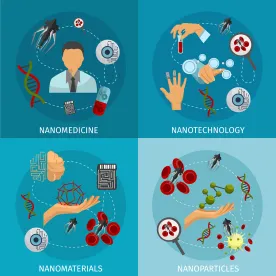Germany’s Federal Environment Agency (UBA) published a November 2017 report entitled Considerations about the relationship of nanomaterial’s physical-chemical properties and aquatic toxicity for the purpose of grouping. The report notes that, based on the variety of existing nanomaterials with numerous modifications, “the effort of investigating environmental fate and effects will be tremendous.” As a result, it will be necessary to group nanomaterials that feature similar environmental fate and effects. The project objective was to correlate physical-chemical data with ecotoxicological effects for selected nanomaterials and to define reference values that can serve as a basis for grouping. The report presents the development of concepts for the grouping of nanomaterials with regard to their ecotoxicological effects, focusing on aquatic ecotoxicity. The project was structured into five steps:
-
Fourteen nanomaterials were selected according to pre-defined criteria. The selected nanomaterials were different subtypes of silver, zinc oxide, titanium dioxide, cerium oxide, and copper;
-
Their physico-chemical properties were determined in water and in all test media;
-
Based on the results, hypotheses regarding the expected ecotoxicity were formulated;
-
The hypotheses were verified by testing the selected nanomaterials in three ecotoxicological tests (acute aquatic toxicity with algae, daphnia, and fish embryo according to the Organization for Economic Cooperation and Development (OECD) Test Guidelines No. 201, 202 and 236); and
-
A grouping concept was compiled based on the nanomaterials’ physico-chemical parameters that were identified as relevant for the emergence of a toxic effect in aquatic organisms.
The report includes recommendations intended to support the further identification of relevant correlations between physico-chemical properties and the ecotoxicity of nanomaterials and thus, the development of the grouping/read-across approach regarding ecotoxicity.




 />i
/>i

